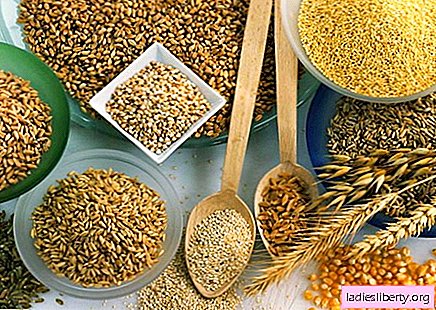
The well-known pumpkin berry, melon and watermelon culture, captivates with juicy, aromatic pulp. And the crusts of watermelon are often not paid attention, they are simply thrown away. Therefore, it is useful to know how good they are and in what form they can decorate the summer (as well as winter and off-season) menu.
What can you tell about the features of watermelon peels and their benefits
Whole watermelon peel is considered edible, except for a thin green skin that creates a classic striped color of the fruit. The taste of the peel is refreshing, peculiar, neutral-pleasant, but most people will prefer the watermelon flesh flowing out with pink juice. So they appreciate the crust mainly for its beneficial properties, not its taste.
Although, after some processing, watermelon peels are very tasty, and you can make candied fruits, jam and pickled snacks in jars in the manner of ordinary cucumbers, moreover, jam and pickled preparations can be prepared by mixing the peels and pulp.
In folk medicine, peels are also used in the form of decoctions and infusions, they are dried (then ground into powder and consumed inside, for example, with honey) and squeezed juice out of them (but they won’t be able to quench their thirst as a fresh juice from pulp - it's just a natural medicine) .
Peels of ordinary (pink-red) and yellow watermelons are equally useful.
The energy value of watermelon is low - 25-35 kcal per 100 g of pulp and the peel is not far from this level, but only while it is fresh - the same jam from it contains about 235 kcal per 100 g.
As for the comparison of the composition and benefits of watermelon peels and pulp, they are largely identical, and the first contains even more chlorophyll, fiber and amino acids, of which the essential amino acid citrulline, which, although not involved in the synthesis of proteins for muscle tissue growth, is most important. but:
• promotes the removal of ammonia from the body, especially produced during intense physical exertion, which, in particular, prevents the feeling of fatigue and muscle pain after these exertions;
• acts as a vasodilator (by increasing the level of nitric oxide), which improves blood flow and oxygen supply to tissues, normalizes high blood pressure.
The crust of lycopene, which creates the red pulp of the carotenoid pigment, is, of course, less contained in the crust, but it still improves the condition of the skin - participating in cell renewal, the production of collagen and elastin for her youth, protecting against solar radiation.
Watermelon peels contain vitamins - A, C, several from group B and E, as well as minerals - potassium, phosphorus, zinc, magnesium, calcium, sodium, silicon.
The content in the watermelon and its peels is high in folic acid (vitamin B9), necessary for normal blood circulation of the brain and strong immunity.
And it is also worth noting choline (B4) - it enhances the action of folic acid, and paired with lycopene acts as a powerful antioxidant - strengthens the immune system and protects the body from premature aging and the risks of cancer.
What diseases will benefit from watermelon peels?
One of the main properties of watermelon is a diuretic, which is also found in berry crusts and is characterized by the following features:
• unlike many diuretics, watermelon does not wash out potassium from the body;
• the use of watermelon even in large quantities does not irritate the urinary tract;
• if stones and kidneys have not yet formed in the kidneys and bladder, but there is sand, watermelon helps to eliminate it;
• the withdrawal of excess fluid is accompanied by a decrease in inflammatory processes in the genitourinary system, the disappearance of such an unpleasant symptom as frequent urination and a decrease in edema (especially caused by heart and kidney diseases).
The use of watermelon peels makes a good contribution to the prevention of cardiac diseases.
Due to the combination of coarse dietary fiber (fiber) and compositional features, watermelon peels heal the gastrointestinal tract, including:
• restoration of disturbed intestinal microflora;
• normalization of digestion;
• reduction of pain in the stomach;
• treatment of constipation;
• healing of minor mucosal lesions.
Along with this, a comprehensive cleansing of the body from toxins and toxins is carried out.
Also, watermelon peels are useful for the following:
• relieve symptoms of joint diseases;
• treatment of cholestasis (stagnation of bile) as choleretic;
• restoration of the full functionality of the respiratory system after inflammatory diseases.
How else are the benefits of watermelon peels
Despite the fact that the watermelon has an average and even rather high glycemic index (of the order of 75 units), its crusts, firstly, contain less sugar than pulp, and secondly, it is mainly represented by easily digestible (not requiring of this large amount of insulin) fructose.
Thus, the berry is not contraindicated in moderation in diabetes mellitus and overweight (obesity).
Another plus of the watermelon is that all of it relates entirely to products of moderate allergenicity.
Watermelon crusts (especially in the form of sweets) positively affect the nervous system - improve mood, help from depression and apathy, increase concentration and the body's resistance to stressful situations.
Watermelon is one of the most useful fruits for female beauty, and although peels cannot be compared with pulp in this regard, still, in particular, they improve the condition of nails, giving them strength and shine, protecting them from brittleness and delamination.
Can there be harm from watermelon peels
Not all plants like melons (which, in addition to watermelon include pumpkin and melon) are able to accumulate nitrates, heavy metals and other harmful substances in their peels.
But to learn all about the environmental safety of watermelon growing places and what fertilizes them is rarely possible.
Therefore, for eating watermelon peels without harm, it is recommended that before eating them or harvesting them in any way, soak the peels (after peeling them from the green peel) in cool water. In 2-3 hours, harmful substances will pass into the liquid, and the crusts will only have to be dried and used with benefit.
Excessive and prolonged treats with crusts (and pulp) of watermelon can lower the level of potassium in the body and to prevent this phenomenon, and in order not to give up your favorite watermelon, it is recommended to introduce into the diet something that is rich in potassium, for example - nuts, dried apricots, raisins, spinach potatoes (with peel).
Do not get involved in crusts of watermelon in the last stages of pregnancy - despite the fact that the internal organs are already experiencing increased stress, the well-being of a woman can be negatively affected by its pronounced diuretic property.
Also, in order to avoid harm from watermelon peels, they are strictly contraindicated in:
• propensities for diarrhea and flatulence;
• urolithiasis (stone movement can be triggered);
• inflammatory and chronic in the stage of exacerbation of gastrointestinal disease (but theoretically, the doctor can lift the ban with favorable indicators of health status).











